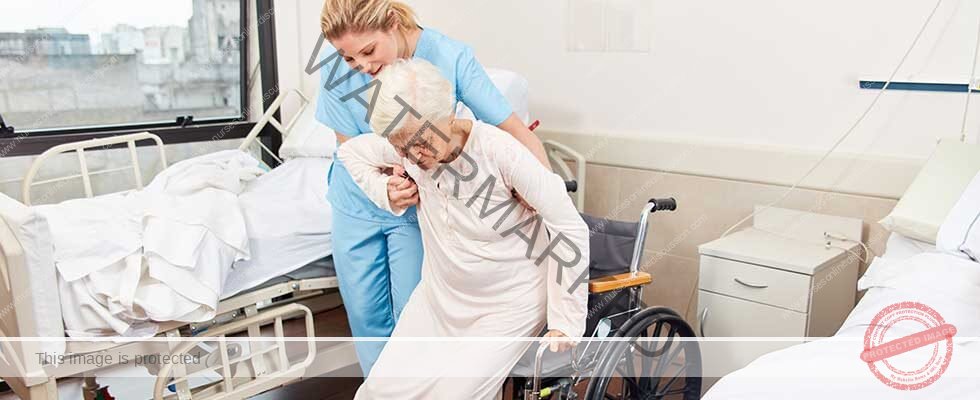Specialized Nursing Care
Subtopic:
Transfer Patients
Table of Contents

Patient Transfer and Referral
Definition:
Transfer or referral involves the organized movement of a patient, accompanied by all necessary medical records and belongings, from one department to another within the same health facility (internal transfer) or from one health facility to another (external transfer), or even to their home. This process ensures the continuity and appropriateness of medical care based on the patient’s evolving clinical needs.
It also encompasses the administrative, clinical, and logistical tasks necessary to maintain patient safety, confidentiality, and quality of care throughout the transition.
Purpose of Transfer/Referral:
The decision to transfer or refer a patient is guided by the following objectives:
To ensure timely and appropriate medical and nursing care that aligns with the patient’s condition and treatment goals.
To facilitate access to specialized treatment or expert consultation that may not be available in the current unit or facility.
To conduct advanced diagnostic tests and procedures that are essential for accurate diagnosis and management.
To promote efficient use of healthcare resources, including personnel, equipment, and infrastructure.
To match the level of care to the patient’s clinical needs, ensuring the patient receives the right care at the right time, in the most suitable setting.
To support continuity of care and reduce clinical risk associated with delayed or fragmented treatment.
Types of Patient Transfers:
Internal Transfer:
This involves moving a patient from one unit to another within the same hospital to receive a different level or type of care.
Example: Transfer from a general medical ward to the Intensive Care Unit (ICU) for close monitoring and specialized interventions.External Transfer:
This is the movement of a patient from one hospital to another, typically for advanced or specialized care that is not available at the current facility.
Example: Referral from a district hospital to a national cancer institute for oncological treatment.Emergency Transfer:
A time-sensitive transfer due to a life-threatening or rapidly deteriorating condition requiring immediate specialized intervention not available at the referring facility.Elective/Planned Transfer:
A non-emergency transfer that is scheduled in advance, often for continuity of care, specialist consultation, or step-down care.
Essential Equipment and Supplies for Transfer:
Wheelchair or stretcher, depending on the patient’s condition and mobility
Patient identification bands and labels
Patient’s personal belongings
Complete medical records, including investigation results (e.g., lab tests, imaging reports)
Emergency kit or oxygen (if required based on the patient’s status)
Communication devices for real-time updates en route
Roles and Responsibilities in Patient Transfer:
Attending Physician: Authorizes the transfer, documents the reason, and provides medical summary.
Nurse in Charge: Coordinates logistics, prepares the patient, updates the receiving unit, and hands over care.
Transport Personnel: Ensures safe and secure patient movement between locations.
Receiving Team: Prepares for and receives the patient, reviews handover report, and resumes clinical care.
Procedure for Transferring a Patient:
Verify the Transfer Order:
Confirm the transfer has been officially authorized by the attending physician or medical officer.Notify Stakeholders:
Inform the patient and their next of kin or relatives about the transfer. Communicate with the receiving department or facility to coordinate readiness.Determine the Mode of Transport:
Assess the patient’s condition to decide whether a wheelchair, stretcher, or ambulance is appropriate. Prepare for any medical support needed during transit.Notify the Receiving Unit:
Contact the receiving nurse-in-charge or facility to ensure proper reception arrangements are in place.Review Patient Records:
Ensure documentation is up to date, including recent vital signs, administered treatments, and any observations or nursing interventions.Prepare Medical Reports and Belongings:
Gather all necessary reports, such as X-rays, lab results, and discharge summaries. Assist the patient or relatives in collecting personal items.Ensure Patient Comfort and Safety During Transit:
Monitor vital signs if necessary, support physical comfort, and ensure proper transfer techniques are used to avoid injury.Manage Diet and Nutrition Orders:
Cancel any hospital dietary orders for the transferring patient, especially if they were on a special meal plan.Address Financial Clearance (if applicable):
Help initiate the process for clearing any pending bills, especially if the transfer is external.Document the Transfer:
Record the date and time of transfer, mode of transport used, general condition of the patient at the time of transfer, and the personnel involved.Assist with Physical Transfer:
Help move the patient to the transport medium (wheelchair/stretcher/ambulance) and accompany them to the new destination, ensuring safety and comfort.Hand Over at Receiving Unit:
Deliver the patient, their documentation, and belongings to the receiving staff. Provide a verbal briefing about the patient’s current status and ongoing care needs.Return of Equipment and Supplies:
Collect and return any hospital property or equipment used during the transfer process back to the originating unit.Post-Transfer Clean-Up:
Thoroughly clean and disinfect the patient’s previous unit and any reusable equipment. Ensure the area is reset and ready for future use.
Considerations for Safe and Effective Transfers:
Always use a transfer checklist to minimize omissions.
Maintain patient dignity and privacy throughout the process.
Secure consent when required, especially for elective and non-emergency transfers.
Use standardized communication tools (e.g., SBAR – Situation, Background, Assessment, Recommendation) during handover.
Monitor for any clinical deterioration during or immediately after the transfer.
Related Topics
- Wound dressing
- Colostomy Care
- Abdominal Paracentesis(Abdominal Tapping)
- Vulva Toilet/ Swabbing
- Oxygen Administration
- Lumbar Puncture
- Nasogastric tube to feed patients
- Gastrostomy Feeding
- Gastric Lavage
- Catheterization
- Tracheostomy Care
- Caring for patients in traction
- Prepare for application of orthopaedic splints
- Bandaging
- Nursing Process
- Take History of the patient
- Perform a physical examination of the Patient
- Making a Nursing Care Plan
- Admission of a patient
- Drug administration
- Transfer Patients
- Discharge of patients
- Last Office
Get in Touch
(+256) 790 036 252
(+256) 748 324 644
Info@nursesonlinediscussion.com
Kampala ,Uganda
© 2025 Nurses online discussion. All Rights Reserved Design & Developed by Opensigma.co

